Out with the Old: Vintage 2014 ‘Village’ Wines from Burgundy’s Côte-de-Nuits Communes Have Matured into Perfection, Modest Prices
We’ve survived another challenging year, and many of us will gather in smaller groups to ring in 2022. Our selection of 2014 wines represent more than ideal dinner companions – they are the mature culmination of the winemakers’ dream. In Burgundy, 2021 was also difficult, with frost in April and the coldest July in fifty years, but like most of us, domains and négociants are by now familiar with such hazards; according to Frédèric Drouhin, President of the Bourgogne Wine Board, “With the 2021 vintage we are back to a classic style with a lovely expression of fruitiness, balance, freshness, and lower level of alcohol.”
May your new year be as filled with superlatives.
Age before beauty? Not when you can have both. All wines age, but some do it more gracefully than others. When wine is young, it expresses bold, primary flavors, largely fresh fruit and bright flowers. Secondary notes may come from a vigneron’s technique; oak barrels taste of vanilla and malolactic fermentation often strikes the senses as buttery. With proper aging, these flavors begin to settle back to reveal a wine’s tertiary notes, the sign of maturity. These might include honey, dried fruit and rustic, earth-notes like truffles, leather and minerals. There is also a change in the wine’s mouthfeel; white wines may seem more viscous, and reds lose their tannins as these compounds fall out as sediment—another reason for decanting.
For every wine, there is an optimum period in which to experience it, a time when these tertiary flavors have peaked, but while enough fruit remains so that a nuance of freshness enlivens them. After that, a slow decline begins. Wines past their prime may still be delicious, but it’s a little like arriving late for a concert: The music you miss may be the very music you came to hear.
We believe that this selection of ‘Village’ wines from the 2014 vintage have arrived at their destination and represent the apex in this particular vintage. Although they will continue to evolve and change in years to come, ‘perfection’ is a word without qualifiers, and it is our contention that the maturation process in this particular selection has raised a flag on its summit.
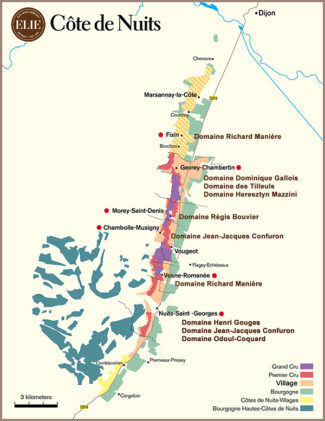
Decanting and Aeration
Once opened, wine immediately begins a dynamic process of oxidation, encouraged when you swirl the wine in your glass. (Have you ever had a host top off your glass and wonder if the refill came from the original bottle?) Aeration smooths harsh tannins while swirling dissipates the undesirable volatiles that may have developed inside the bottle as acid and alcohol intermix; the warmth from the room and your hands concentrates the aromatics. For most well-produced wines, a period of ‘acclamation’ is necessary for a freshly uncorked wine to reveal its full potential, and with older wines—those that have been cellared for a number of years—this is especially true. Decanting is aeration on a large scale, where the wine is poured into a second vessel, preferably one with a broad bottom to give the wine more surface exposure to oxygen. Since winery labels and bottle design are part of experience, it’s recommended that the wine be returned to its place of origin before serving.
These wines are best served at cellar temperature, 60 – 64 degrees Fahrenheit.
A Word on the 2014 Vintage
Top estates frequently produce outstanding wines in challenging vintages, and generally for two reasons: A lower per-acre yield produced in difficult years tend to concentrate flavors in the remaining grapes, and in judicious hand—those who invest in intensive sorting—less wine may be bottled, but it comes for the best of the crop. In Burgundy, June 28, 2014, is remembered as the day a ferocious hailstorm decimated vines throughout the Côte d’Or; many growers saw their yields halved over the course of a single hour. The Côte de Beaune took the brunt of the storm, with villages like Volnay, Pommard, Meursault and Beaune being hardest hit. The summer that followed was wet and chilly with a few hot days in July and a miserable August; Pierre Damoy of Gevrey-Chambertin, said, “Given that this was supposed to be an early vintage, the awful weather in August slowed everything down and caused us great anxiety.”
Côte de Nuits was spared much of the hail, but the weather conditions affected the whole of the Côte d’Or. Some late-season rot appeared in the Pinot Noir harvest, but it was dealt with effectively in the vineyard or on the sorting tables. As a result, the best sites delivered excellent wines of minerality, fruit intensity and staying power, and according to Thierry Brouin of Clos des Lambrays in Morey-St-Denis, “2014 turned out to be an excellent vintage, frequently overlooked in the shadow of the phenomenal crop the following year.”
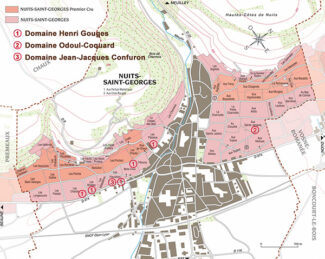
Nuits-Saint-Georges: Muscular & Chewy
Nuits-Saint-Georges—the town in eastern Burgundy from which the Côte de Nuits draws its name, sprawls across 800 acres of Village and Premier Cru vineyards. Production here is almost exclusively red, with 97% of the vineyards planted to Pinot Noir. Of these, there are 41 Premier Cru climats and wines made conforming to the strictest of the Nuits-Saint-Georges appellation rules, may claim the title Nuits-Saint-Georges Premier Cru. The soils in the northern half are made up of pebbly alluvium washed down from slopes, or, where the land is low, silty deposits from the river Meuzin. In the south, the alluvia at the base of the slopes originates in the combe of Vallerots where there are deep marly-limestone soils, while at the top of the slope, the rock is almost at the surface. Vineyard exposures are mostly to the East or South-East.
1. Nuits-Saint-Georges 2014, Domaine Henri Gouges ($95)
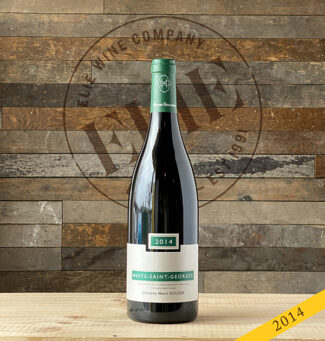 Considered by many to be Nuits-Saint-Georges’ top domain, the estate has been passed down through many generations and is, to this day, a family affair, with four Gouges at the helm. Grégory Gouges has been the domain’s winemaker since 2003; Pierre today runs the business end with his cousin Christian, son Grégory, and Grégory’s cousin Antoine. The vineyards cover 36 acres, including seven of the best well-positioned Premiers in addition to the appellation’s most famous vineyards, Les Vaucrains and Les Saint Georges. The ‘Village’ cuvée is produced from the five lieux-dits of Plateaux, Belles Croix, Fleurières, Brûlées, and Chaliots, for a surface area of 5 acres, all located in the southern part of Nuits-Saint-Georges, and at the start of the hillside, on deep soils, with a mixture of clay, alluvium and limestone gravel.
Considered by many to be Nuits-Saint-Georges’ top domain, the estate has been passed down through many generations and is, to this day, a family affair, with four Gouges at the helm. Grégory Gouges has been the domain’s winemaker since 2003; Pierre today runs the business end with his cousin Christian, son Grégory, and Grégory’s cousin Antoine. The vineyards cover 36 acres, including seven of the best well-positioned Premiers in addition to the appellation’s most famous vineyards, Les Vaucrains and Les Saint Georges. The ‘Village’ cuvée is produced from the five lieux-dits of Plateaux, Belles Croix, Fleurières, Brûlées, and Chaliots, for a surface area of 5 acres, all located in the southern part of Nuits-Saint-Georges, and at the start of the hillside, on deep soils, with a mixture of clay, alluvium and limestone gravel.
2. Nuits-Saint-Georges ‘Aux Saints Jacques’ 2014, Domaine Odoul-Coquard ($65)
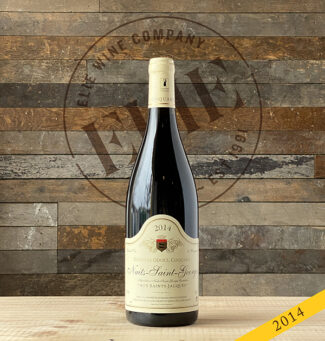 Odoul cut his winemaking teeth at Domaine Dujac, Mommessin, and Domaine Denis Mortet. In 2004, he returned to the family domain to join his parents, Sylvette and Thierry, and as of 2009, he took over the estate as vigneron. In all, the family farms 25 acres in 21 different appellations throughout the Côte de Nuits; most notably, they own the majority of the lieu-dit vineyard of Les Crais Gillon in Morey-Saint-Denis. All of their farming is done with ‘lutte raisonée’, a sustainable viticulture practice.
Odoul cut his winemaking teeth at Domaine Dujac, Mommessin, and Domaine Denis Mortet. In 2004, he returned to the family domain to join his parents, Sylvette and Thierry, and as of 2009, he took over the estate as vigneron. In all, the family farms 25 acres in 21 different appellations throughout the Côte de Nuits; most notably, they own the majority of the lieu-dit vineyard of Les Crais Gillon in Morey-Saint-Denis. All of their farming is done with ‘lutte raisonée’, a sustainable viticulture practice.
3. Nuits-Saint-Georges ‘Les Fleurières’ 2014, Domaine Jean-Jacques Confuron ($70)
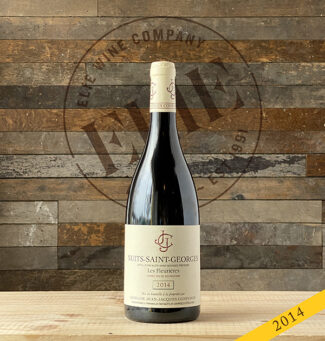 The 20 acres that make up Domaine Jean-Jacques Confuron are now controlled by Sophie Meunier-Confuron and her husband Alain Meunier, who converted all parcels to organic viticulture in 1990. This includes excellent parcels of Premier Cru and Village vines in Vosne-Romanée, Chambolle-Musigny and Nuits-Saint-Georges as well as two great Grands Crus, Romanée Saint-Vivant and Clos-Vougeot. The Confurons vinify according to the Burgundian mantra of ‘power without weight’, seeking a depth of flavor balanced by refinement and elegance. ‘Les Fleurières’ is a lieu-dit situated on clay-limestone soils that are ideally suited to Pinot Noir.
The 20 acres that make up Domaine Jean-Jacques Confuron are now controlled by Sophie Meunier-Confuron and her husband Alain Meunier, who converted all parcels to organic viticulture in 1990. This includes excellent parcels of Premier Cru and Village vines in Vosne-Romanée, Chambolle-Musigny and Nuits-Saint-Georges as well as two great Grands Crus, Romanée Saint-Vivant and Clos-Vougeot. The Confurons vinify according to the Burgundian mantra of ‘power without weight’, seeking a depth of flavor balanced by refinement and elegance. ‘Les Fleurières’ is a lieu-dit situated on clay-limestone soils that are ideally suited to Pinot Noir.
4. Chambolle-Musigny 2014, Domaine Jean-Jacques Confuron ($89)
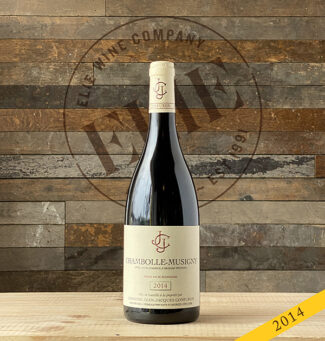 Another gem from Sophie Meunier-Confuron and her husband Alain Meunier and their organic viticulture. True to Chambolle-Musigny’s reputation, the wine is refined and perfumed with the iconic aromatics that has earned Chambolle-Musigny a reputation as the ‘Volnay’ of the Côte de Nuits. Confuron’s plot in Chambolle-Musigny contains 80-year-old vines, the oldest in the domain, and Alain has consistently ploughed it by horse since 2003.
Another gem from Sophie Meunier-Confuron and her husband Alain Meunier and their organic viticulture. True to Chambolle-Musigny’s reputation, the wine is refined and perfumed with the iconic aromatics that has earned Chambolle-Musigny a reputation as the ‘Volnay’ of the Côte de Nuits. Confuron’s plot in Chambolle-Musigny contains 80-year-old vines, the oldest in the domain, and Alain has consistently ploughed it by horse since 2003.
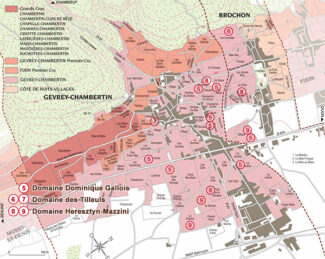
Gevrey-Chambertin: Gamey & Velvety
The Premiers Crus of Gevrey-Chambertin, including the twin crown jewels of Chambertin and Clos de Bèze, are found beyond the entrance to the hollowed hill of Lavaux; they occupy the upper portion of the Côte at elevations between one thousand and 1200 feet, where the shallow soils are largely composed of shall brown limestone. Below them are the Villages-designated sites, where the vines are grown in brown calcic or limey soils enrichened by the red silt that washes down from the plateau. There is no shortage of quotes about this superlative appellation, summarized by Grégory Patriat, winemaker for Jean-Claude Boisset: “To me, Gevrey-Chambertin is the most interesting appellation in Burgundy. It can reflect finesse while maintaining its strength, and it is here, more than anywhere else, that Pinot Noir reaches its greatest aging potential.”
5. Gevrey-Chambertin 2014, Domaine Dominique Gallois ($75)
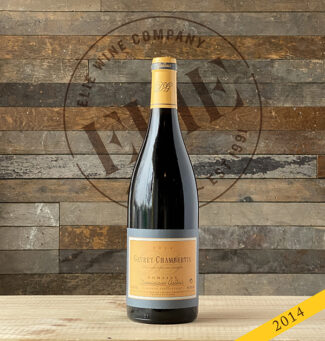 The soft-spoken Dominique Gallois has been producing wonderful wines from a scant ten acres since 1989. About half is represented by Gevrey-Chambertin Village, ten parcels situated around the village of Gevrey-Chambertin itself. The climats of En Songe, En Jouise, En Billard, En Dérée, Croix des Champs, Sylvie, La Justice, Charreux produce the cuvée, where average vine age is fifty years. Annual production is around 10,000 bottles.
The soft-spoken Dominique Gallois has been producing wonderful wines from a scant ten acres since 1989. About half is represented by Gevrey-Chambertin Village, ten parcels situated around the village of Gevrey-Chambertin itself. The climats of En Songe, En Jouise, En Billard, En Dérée, Croix des Champs, Sylvie, La Justice, Charreux produce the cuvée, where average vine age is fifty years. Annual production is around 10,000 bottles.
6. Gevrey-Chambertin ‘Les Évocelles’ 2014, Domaine des Tilleuls (Philippe Livera) ($65)
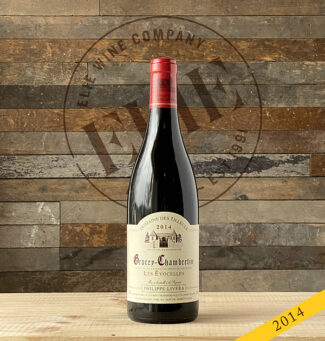 In 2005, at the age of 24, Damien Livera took over the des Tilleuls estate from his father Philippe and immediately upgraded the winery and renovated the vineyards. He credits advice from Arnaud Mortet, a local legend, in reducing his use of new wood during élevage and lessening the level of extraction. ‘Les Évocelles’ is a 25-acre Village-level lieu-dit in the northeast area of Gevrey-Chambertin, bordering the Premiers Crus of Champeaux to the north and Les Goulots to the south.
In 2005, at the age of 24, Damien Livera took over the des Tilleuls estate from his father Philippe and immediately upgraded the winery and renovated the vineyards. He credits advice from Arnaud Mortet, a local legend, in reducing his use of new wood during élevage and lessening the level of extraction. ‘Les Évocelles’ is a 25-acre Village-level lieu-dit in the northeast area of Gevrey-Chambertin, bordering the Premiers Crus of Champeaux to the north and Les Goulots to the south.
7. Gevrey-Chambertin ‘Clos Village’ 2014, Domaine des Tilleuls (Philippe Livera) ($65)
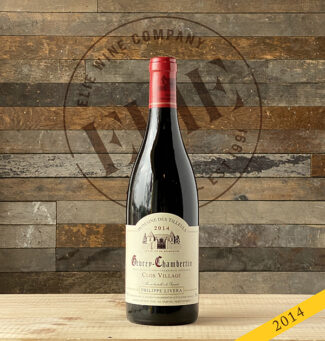 ‘Clos Village’ is a walled vineyard located just outside the Livera family’s cellars. Vines were planted in the early 1960s, and the plot sits directly downslope from the village’s top Premier Cru vineyards where soils combine brown limestone and marl. The grapes are hand-harvested, destemmed and fermented on indigenous yeasts; 60% is aged in older French oak barrels, with approximately 40% seeing new wood. The wine is always bottled unfined and unfiltered.
‘Clos Village’ is a walled vineyard located just outside the Livera family’s cellars. Vines were planted in the early 1960s, and the plot sits directly downslope from the village’s top Premier Cru vineyards where soils combine brown limestone and marl. The grapes are hand-harvested, destemmed and fermented on indigenous yeasts; 60% is aged in older French oak barrels, with approximately 40% seeing new wood. The wine is always bottled unfined and unfiltered.
8. Gevrey-Chambertin ‘Les Songes’ 2014, Domaine Heresztyn-Mazzini ‘Vieilles Vignes’ ($85)
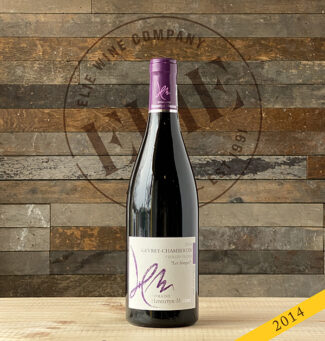 Florence and Simon Heresztyn-Mazzini hail from different winemaking regions—Florence from Burgundy and Simon from Champagne. After ten years of working Heresztyn-owned vineyards in Gevrey-Chambertin, the couple decided to start their own venture on 14 acres spread across the villages of Gevrey-Chambertin, Morey-Saint-Denis, and Chambolle-Musigny. 2012 was their first vintage. ‘Les Songes’ lieu-dit is just under an acre of old vines planted in 1926 and 1952 and grown in clay-limestone with marl rich in fossilized shells. Annual production is around 2,000 bottles.
Florence and Simon Heresztyn-Mazzini hail from different winemaking regions—Florence from Burgundy and Simon from Champagne. After ten years of working Heresztyn-owned vineyards in Gevrey-Chambertin, the couple decided to start their own venture on 14 acres spread across the villages of Gevrey-Chambertin, Morey-Saint-Denis, and Chambolle-Musigny. 2012 was their first vintage. ‘Les Songes’ lieu-dit is just under an acre of old vines planted in 1926 and 1952 and grown in clay-limestone with marl rich in fossilized shells. Annual production is around 2,000 bottles.
9. Gevrey Chambertin 2014, Domaine Heresztyn-Mazzini ‘Vieilles Vignes’ ($75)
 Using grapes taken exclusively from vines planted in 1950 and 1995 in 5 acrs of Lieux-dits Billard, Es Murots, La Platière, and Puits de la Barraque, team Heresztyn-Mazzini relies on 35% whole bunch with wild yeast fermentation, then pre-ferments using cold macerations. Punch downs take place three to four times a day, and the wine is aged in 30% new wood oak barrels for 16-18 months, then bottled at the estate without fining or filtering. Annual production is around 6,000 bottles.
Using grapes taken exclusively from vines planted in 1950 and 1995 in 5 acrs of Lieux-dits Billard, Es Murots, La Platière, and Puits de la Barraque, team Heresztyn-Mazzini relies on 35% whole bunch with wild yeast fermentation, then pre-ferments using cold macerations. Punch downs take place three to four times a day, and the wine is aged in 30% new wood oak barrels for 16-18 months, then bottled at the estate without fining or filtering. Annual production is around 6,000 bottles.
10. Morey-Saint-Denis ‘En la Rue de Vergy’ 2014, Domaine Régis Bouvier ($65)
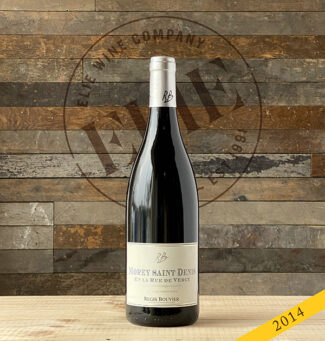 Rich in Premiers Crus, Morey-Saint-Denis also encompasses five Grands Crus (Clos de Tart, Bonnes Mares, Clos de la Roche, Clos Saint-Denis, Clos des Lambrays). It forms a bridge between the powerful, but velvet-smooth wines of Gevrey-Chambertin and Chambolle-Musigny which is often referred to as the most ‘feminine’ wine of the Côte de Nuits. Régis Bouvier, known for reasonable yields from high quality terroirs, produces white, red and some of the best rosé in Burgundy. ‘En la Rue de Vergy’ is an acre-and-a-half lieu-dit above Les Bonnes Mares, where there is—remarkably—no soil; the vines are planted directly in the limestone bedrock. This forces the roots to find crevices between the stones and the rock strata to plunge deeply in search of water and nutrients.
Rich in Premiers Crus, Morey-Saint-Denis also encompasses five Grands Crus (Clos de Tart, Bonnes Mares, Clos de la Roche, Clos Saint-Denis, Clos des Lambrays). It forms a bridge between the powerful, but velvet-smooth wines of Gevrey-Chambertin and Chambolle-Musigny which is often referred to as the most ‘feminine’ wine of the Côte de Nuits. Régis Bouvier, known for reasonable yields from high quality terroirs, produces white, red and some of the best rosé in Burgundy. ‘En la Rue de Vergy’ is an acre-and-a-half lieu-dit above Les Bonnes Mares, where there is—remarkably—no soil; the vines are planted directly in the limestone bedrock. This forces the roots to find crevices between the stones and the rock strata to plunge deeply in search of water and nutrients.
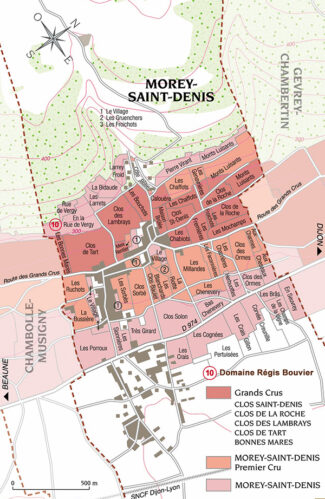
11. Fixin 2014, Domaine Richard Manière ($60)
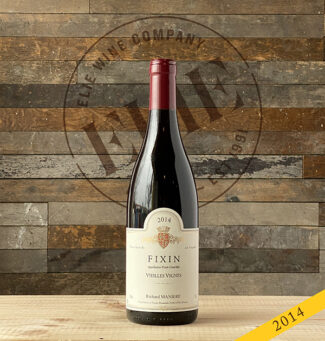 Fixin occupies the region between Dijon and Gevrey-Chambertin, and (as in much of Burgundy), the Premier Cru plots are on reasonably homogenous brown limestone soils with east to south-east exposures. Village plots are on lower ground at the foot of the slopes where the soil is a mixture of limestone and marl. With a home base in the village of Vosne-Romanée, Domaine Richard Manière works 20 acres in plots sprinkled throughout Fixin, Echézeaux and Vosne-Romanée.
Fixin occupies the region between Dijon and Gevrey-Chambertin, and (as in much of Burgundy), the Premier Cru plots are on reasonably homogenous brown limestone soils with east to south-east exposures. Village plots are on lower ground at the foot of the slopes where the soil is a mixture of limestone and marl. With a home base in the village of Vosne-Romanée, Domaine Richard Manière works 20 acres in plots sprinkled throughout Fixin, Echézeaux and Vosne-Romanée.
12. Vosne-Romanée 2014, Domaine Richard Manière ($85)
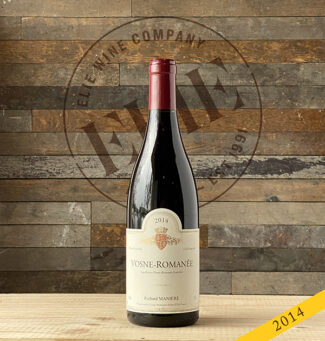 Burgundian author Gaston Roupnel claimed that in Vosne-Romanée, “all the charms of Bourgogne come together.” The finest vineyards are clustered together immediately north of the town of Vosne-Romanée and in top vintages have the perfect balance of weight, structure, elegance and longevity.
Burgundian author Gaston Roupnel claimed that in Vosne-Romanée, “all the charms of Bourgogne come together.” The finest vineyards are clustered together immediately north of the town of Vosne-Romanée and in top vintages have the perfect balance of weight, structure, elegance and longevity.
El Dorado in White from Spain’s Rueda
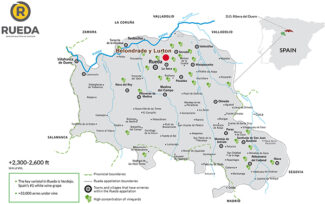
Rueda 2014, Belondrade y Lurton ($58)
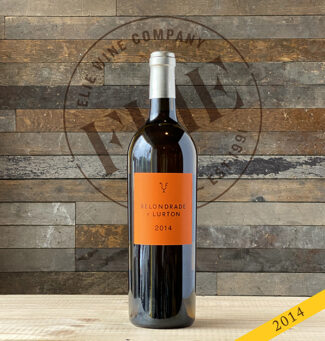 While we’re getting our 2014 on, this mature white wine from the Rueda DO—40,000 sprawling acres in the Spanish commune of Castilla y León—is an enological marvel. Transplanted Frenchman Didier Belondrade founded a winery based on his conviction that the Verdejo varietal could rival Chardonnay for aging potential, and as such, he treats Verdejo with the care that Burgundian estates bestow upon Chardonnay, fermenting and aging Verdejo on lees in 300-liter French oak barrels. Each of his 23 plots is fermented and aged separately, and at the end of one year, a selection and blending process take place, after which the wine stays in bottle for a minimum of six months before release. The wine has now reached its zenith, having developed deep honey notes with overtones of dried chamomile and candied lemon peel.
While we’re getting our 2014 on, this mature white wine from the Rueda DO—40,000 sprawling acres in the Spanish commune of Castilla y León—is an enological marvel. Transplanted Frenchman Didier Belondrade founded a winery based on his conviction that the Verdejo varietal could rival Chardonnay for aging potential, and as such, he treats Verdejo with the care that Burgundian estates bestow upon Chardonnay, fermenting and aging Verdejo on lees in 300-liter French oak barrels. Each of his 23 plots is fermented and aged separately, and at the end of one year, a selection and blending process take place, after which the wine stays in bottle for a minimum of six months before release. The wine has now reached its zenith, having developed deep honey notes with overtones of dried chamomile and candied lemon peel.
- - -
Posted on 2022.01.03 in Rueda, Côte de Nuits, Morey-Saint-Denis, Nuits-Saint-Georges, Gevrey-Chambertin, Chambolle-Musigny, France, Spain DO, Burgundy, Wine-Aid Packages
Featured Wines
- Notebook: A’Boudt Town
- Saturday Sips Wines
- Saturday Sips Review Club
- The Champagne Society
- Wine-Aid Packages
Wine Regions
Grape Varieties
Aglianico, Albarino, Albarín Blanco, Albarín Tinto, Albillo, Aleatico, Arbanne, Aubun, Barbarossa, barbera, Beaune, Biancu Gentile, bourboulenc, Cabernet Franc, Cabernet Sauvignon, Caino, Caladoc, Calvi, Carcajolu-Neru, Carignan, Chablis, Chardonnay, Chasselas, Clairette, Corvina, Cot, Counoise, Erbamat, Ferrol, Fiano, Frappato, Friulano, Fromenteau, Fumin, Garnacha, Gewurztraminer, Godello, Graciano, Grenache, Grolleau, Groppello, Juan Garcia, Lambrusco, Loureira, Macabeo, Macabou, Malvasia, Malvasia Nera, Marsanne, Marselan, Marzemino, Melon de Bourgogne, Merlot, Mondeuse, Montanaccia, Montepulciano, Morescola, Morescono, Moscatell, Muscadelle, Muscat, Natural, Nero d'Avola, Parellada, Patrimonio, Petit Meslier, Petit Verdot, Pineau d'Aunis, Pinot Auxerrois, Pinot Blanc, Pinot Gris, Pinot Meunier, Pinot Noir, Poulsard, Prieto Picudo, Rondinella, Rousanne, Roussanne, Sangiovese, Sauvignon Blanc, Savignin, Semillon, Souson, Sparkling, Sumoll, Sylvaner, Syrah, Tannat, Tempranillo, Trebbiano, Trebbiano Valtenesi, Treixadura, Trousseau, Ugni Blanc, vaccarèse, Verdicchio, Vermentino, Viognier, Viura, Xarel-loWines & Events by Date
- April 2024
- March 2024
- February 2024
- January 2024
- December 2023
- November 2023
- October 2023
- September 2023
- August 2023
- July 2023
- June 2023
- May 2023
- April 2023
- March 2023
- February 2023
- January 2023
- December 2022
- November 2022
- October 2022
- September 2022
- August 2022
- July 2022
- June 2022
- May 2022
- April 2022
- March 2022
- February 2022
- January 2022
- December 2021
- November 2021
- October 2021
- September 2021
- August 2021
- July 2021
- June 2021
- May 2021
- April 2021
- March 2021
- February 2021
- January 2021
- December 2020
- November 2020
- October 2020
- September 2020
- August 2020
- July 2020
- June 2020
- May 2020
- April 2020
- March 2020
- February 2020
- January 2020
- December 2019
- November 2019
- October 2019
- September 2019
- August 2019
- July 2019
- June 2019
- May 2019
- April 2019
- March 2019
- February 2019
- January 2019
- December 2018
- November 2018
- October 2018
- September 2018
- August 2018
- July 2018
- June 2018
- May 2018
- April 2018
- March 2018
- February 2018
- January 2018
- December 2017
- November 2017
- October 2017
- September 2017
- August 2017
- July 2017
- June 2017
- May 2017
- April 2017
- March 2017
- February 2017
- January 2017
- December 2016
- November 2016
- October 2016
- September 2016
- August 2016
- July 2016
- June 2016
- May 2016
- April 2016
- March 2016
- February 2016
- January 2016
- December 2015
- November 2015
- October 2015
- September 2015
- August 2015
- July 2015
- June 2015
- May 2015
- April 2015
- March 2015
- February 2015
- January 2015
- December 2014
- November 2014
- October 2014
- September 2014
- August 2014
- July 2014
- June 2014
- April 2014
- March 2014
- February 2014
- January 2014
- December 2013
- November 2013
- October 2013
- September 2013
- August 2013
- July 2013
- June 2013
- May 2013
- April 2013
- March 2013
- February 2013
- January 2013
- December 2012
- November 2012
- October 2012
- February 2004
Search



